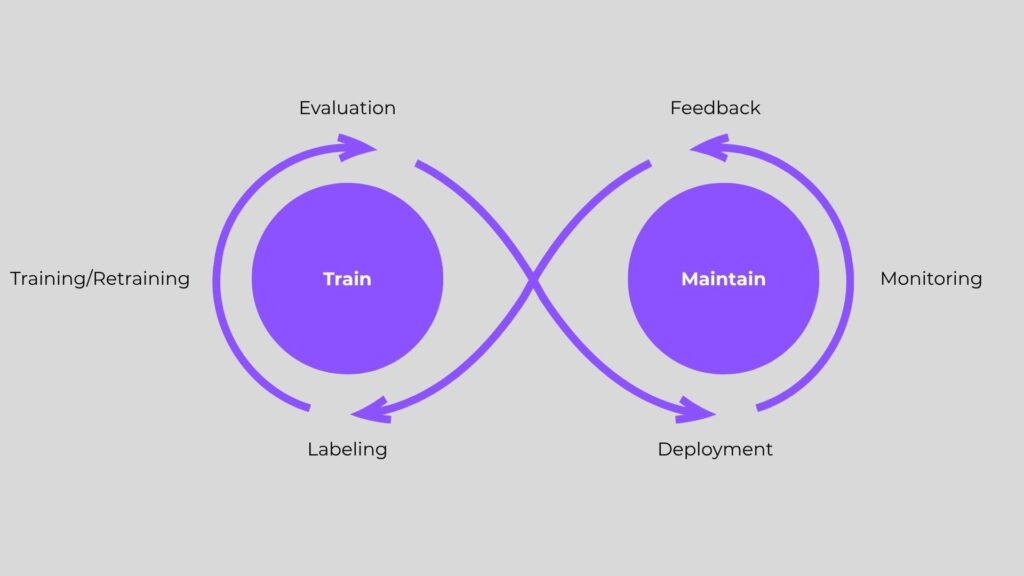As a key field of artificial intelligence, computer vision has exploded in recent years, driving innovation in everything from healthcare to agriculture. While its real-world applications are everywhere, starting a computer vision project can feel like a daunting task—a maze of complex steps for any beginner. In this comprehensive guide, News Sky Solution will demystify the process, providing a clear, step-by-step roadmap to build your complete computer vision project from idea to implementation.
An Overview of a Computer Vision Project
What is a Computer Vision Project?
A computer vision project involves developing systems that enable computers to interpret and understand visual information from the world, such as images or videos. These projects apply machine learning and deep learning techniques to automate tasks like object detection, image classification, segmentation, and more. The goal is to create models that can analyze visual data and make decisions or predictions based on it, which can be applied across industries from manufacturing to healthcare.
Types of Computer Vision Project
The field of computer vision encompasses a wide variety of project types, each defined by its specific goals, applications, and complexity. Some of the most common and fundamental types include:
- Image Classification: Sorting visual content into predetermined categories based on their characteristics.
- Object Detection: Recognizing and pinpointing specific items within visual content, including their precise locations.
- Image Segmentation: Breaking down visual content into distinct regions for comprehensive pixel-level analysis.
- Facial Recognition: Authenticating or identifying people through distinctive facial characteristics and patterns.
- Pose Estimation: Analyzing and tracking human skeletal structure and body movement patterns.
- Anomaly Detection: Identifying defects or irregular patterns within visual data.
Each type requires different datasets, models, and deployment strategies tailored to the specific problem.

Steps to Start a Computer Vision Project
Step 1: Define the Problem and Plan the Project
Begin by establishing a comprehensive understanding of the challenge you aim to address. This includes setting specific business goals, identifying stakeholders, and outlining the project scope. A detailed project description should cover:
- Project name and purpose.
- Business goals and success criteria.
- Timeline with milestones.
- Stakeholders including privacy and security considerations.
- Hardware and infrastructure requirements (cameras, servers, connectivity).
- Environment and deployment locations.
Using tools like Gantt charts to assign responsibilities and track progress can enhance project planning and ensure alignment across teams.
Step 2: Collect and Prepare Data for Your Project
Data collection is critical. Build a comprehensive and well-balanced dataset that accurately represents your specific use case. This involves:
- Dataset collection from various sources or capturing new images/videos.
- Data annotation to label the visual data accurately, which is essential for supervised learning.
- Data preprocessing such as resizing, normalization, and augmentation to improve model robustness.
Properly labeled and meticulously curated datasets form the cornerstone of effective model training and successful deployment.
Step 3: Choose the Right Model and Framework
Choose a model architecture and framework that best suits your project objectives and deployment environment. Key considerations include whether to build a model from the ground up or leverage transfer learning with pre-trained networks, the model’s complexity in relation to hardware limitations (especially for edge deployments), and how well it integrates with your platform while meeting performance requirements.
Leading options include TensorFlow, PyTorch, and niche solutions like Ultralytics for object detection. This decision will influence both your data preparation approach and training methodology.
Step 4: Train Your Machine Learning Model
After finalizing your dataset and choosing a suitable model architecture, initiate the training phase by following these key steps:
- Divide your dataset into clear training, validation, and test sets.
- Apply suitable training algorithms and fine-tune hyperparameters to boost model performance.
- Incorporate data augmentation methods to improve generalization.
- Continuously track training metrics to prevent issues like overfitting or underfitting.
Remember, training is an iterative process that often requires several rounds of refinement to achieve optimal results.
Step 5: Evaluate Model Performance
Assess your model using metrics relevant to your task, such as accuracy, precision, recall, F1-score, or mean average precision (mAP) for detection tasks. Evaluation should include:
- Testing on unseen data to measure generalization.
- Comparing different models or training approaches.
- Validating performance under real-world conditions.
This step ensures your model meets the defined business goals and technical requirements.
Step 6: Deploy and Integrate Your Model
Deployment involves integrating the trained model into the target environment, which could be cloud-based servers, edge devices, or embedded systems. Key considerations include:
- Model optimization for inference speed and resource constraints.
- Setting up APIs or interfaces for application integration.
- Ensuring security and privacy compliance.
- Preparing for scalability and maintenance.
Deployment transforms your model from a prototype into a usable product or service.
Step 7: Monitor, Iterate, and Improve
After deployment, it’s essential to regularly monitor model performance to identify any drift or errors. Continuously collect new data to update and retrain the model, ensuring it adapts and improves over time. This ongoing lifecycle strategy helps preserve accuracy and maintain relevance in evolving environments.

Challenges When Starting a Computer Vision Project
When launching computer vision projects, organizations often encounter challenges that can hinder progress—impacting budgets, timelines, and the overall strategic direction. Common obstacles faced across most initiatives include:
Not Enough Data
Insufficient data can lead to poor model performance. Ensure you collect enough diverse and representative samples to train a robust model.
Forgetting About Data Quality
Accurate annotations and high-quality data are just as important as having a large dataset. Inaccurate or low-quality data can misguide the training process and negatively impact model performance.
Choosing a Problem That’s Too Complex
Start with a manageable scope. Overly complex problems can stall progress and exhaust resources. Build feasibility studies or proofs of concept before scaling.
Conclusion
Starting a computer vision project requires meticulous planning, from problem definition and dataset collection to model selection, training, and deployment. By following a structured approach and avoiding common pitfalls, businesses can harness computer vision to automate processes, gain insights, and innovate effectively. Leveraging the right toolkits, frameworks, and hardware, while considering ethical and privacy concerns, ensures your project delivers real-world value and positions your organization at the forefront of AI-driven technology.
Stay updated with the latest news on computer vision with us right here.

